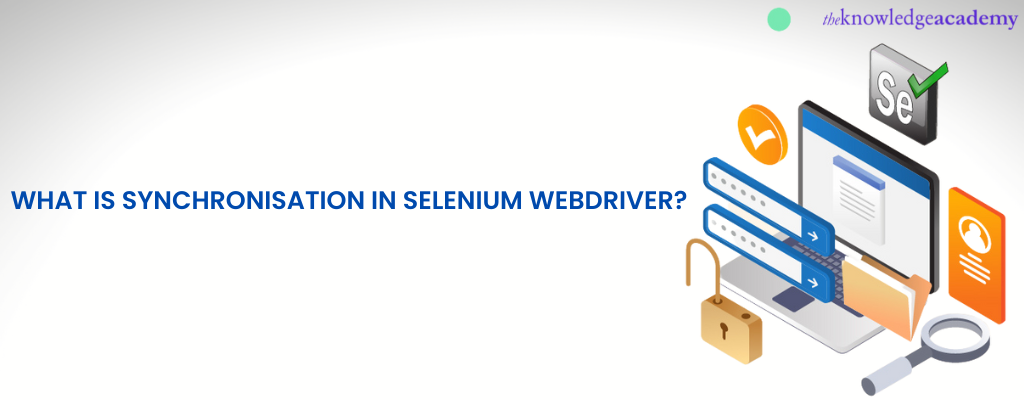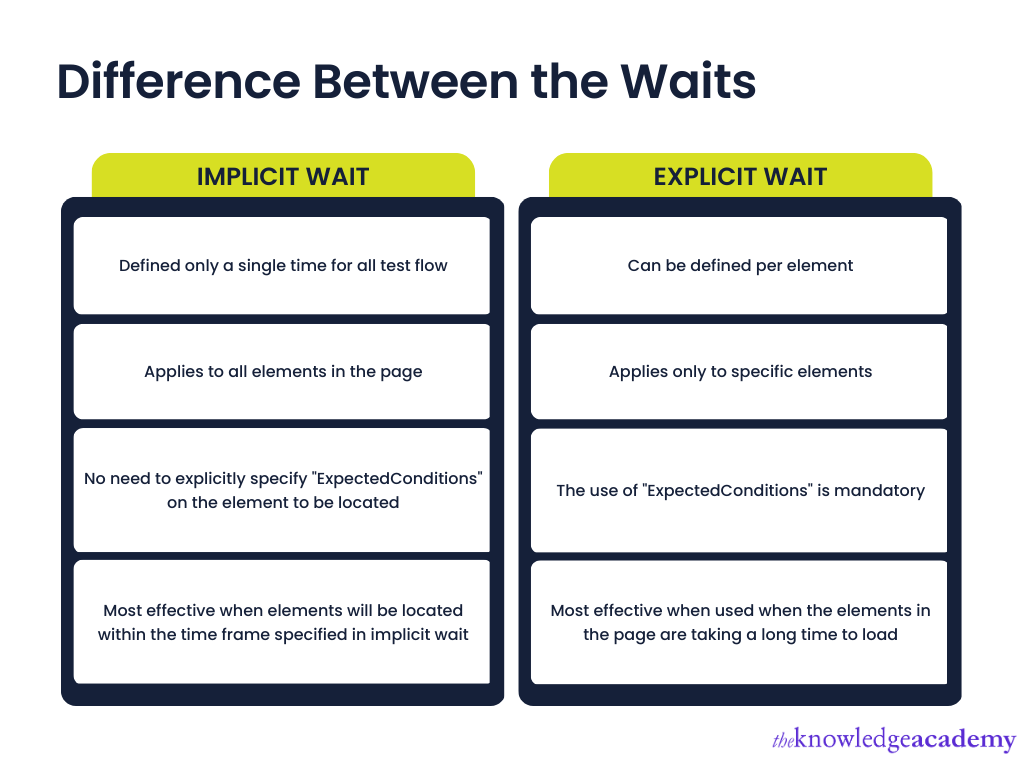We may not have the course you’re looking for. If you enquire or give us a call on +60 1800812339 and speak to our training experts, we may still be able to help with your training requirements.
Training Outcomes Within Your Budget!
We ensure quality, budget-alignment, and timely delivery by our expert instructors.

If an action is to take place, we always expect the components to work together at the same pace. This coordination process between the components is termed Synchronisation. Synchronisation in Selenium executes the code and applications, which must be in Synchronisation to perform the operation.
Statistically, Selenium Framework is preferred for Automation as it is used by over 57000 companies worldwide, enjoying a 24.63% market share among other software testing tools. This blog answers questions like, ‘What is synchronisation in selenium?’, issues related to Synchronisation in Selenium webdriver, and many more that act as a quick guide for you.
Table of Contents
1) How to achieve Synchronisation in the Selenium Web driver?
2) Types of Synchronisations in Selenium
a) Conditional Synchronisation
b) Unconditional Synchronisation
3) Synchronisation issue in Selenium
4) Conclusion
Are you curious to know the basics of Selenium Webdriver Automation? Here is the course on “Introduction to Test Automation with Selenium Webdriver” in our portal.
How to achieve Synchronisation in Selenium Web driver?
Two things should work in parallel in the Selenium Automation Test.
1) Application Under Test (AUT)
2) Testing tool
Let’s say AUT and the testing tool has their speed. Sometimes the Testing tool may be faster, and the AUT takes some time for the page to load or for web elements to be present on the webpage. In this case, the Testing tool may not find some aspects since its speed is faster than the AUT. So, now the overall test fails. AUT and the Testing tool should have the same working speed to overcome this distress.
Synchronisation brings the AUT and the Testing tool’s speed in sync. It matches the speed of the application, and in some cases, it also waits for specific conditions. Now, errors like ‘ElementNotVisible’ and ‘NoSuchElement’ may not arise.
Types of Synchronisations in Selenium
In Selenium Webdriver Automation, Synchronisation can be divided into two types: Conditional and Unconditional Synchronisation.
Conditional Synchronisation
In this type of Synchronisation, an error can be overthrown as we can specify timeout duration along with some desired conditions. Conditional Synchronisation, also known as Dynamic wait divided into two types -
a) Implicit wait
b) Explicit wait ( Webdriver wait)
c) PageLoadTimeout
d) Fluent wait
a) Implicit wait
It tells the web driver to wait a certain amount of time and then throws a ‘NoSuchElementException’.Here the default setting is 0. Once the time is set, the web driver will wait for the element before throwing an exception.
The implicit wait gets the wait time for its driver’s lifetime soon after the web driver gets instantiated. If any element is unavailable in the DOM, it waits until the specified time to search for it.
The Implicit wait will accept two parameters. The first one accepts time as an integer, and the second one accepts time measurement in terms of SECONDS, MINUTES, MILLISECOND, MICROSECONDS, NANOSECONDS, DAYS, HOURS, etc
b) Explicit wait ( Webdriver wait)
It tells the web driver to wait for certain expected conditions or maximum time exceeded before throwing the ‘ElementNotVisibleException’ exception. The Explicit wait in Selenium is so intelligent that it can be applied only for specified elements.
The Explicit wait waits for a particular Web element, whereas the Implicit wait waits for the whole Web element in the driver instance. As it waits for the dynamically loaded Ajax elements, it is considered a better option than the Implicit wait. This can be used when the elements take a long time to load and verify the element's properties.
c) PageLoadTimeout
This wait is used for Web browser page load synchronisation. Sometimes when the page load takes more time than the web driver’s speed, the web driver throws TimeOutException. For the situation to get better, PageLoadTime is used.
d) Fluent wait
This provides a polling mechanism that is used based on the frequency to want to poll for a specific element to appear or load. It tries to find the web element at regular intervals of time until timeout or till the object is found. It defines two things: the frequency of checking the condition before throwing an exception and the time to wait for a specific condition.
Unconditional Synchronisation
This Unconditional Synchronisation of Selenium with Java specifies just the timeout limit. It pauses the code for a specified time, and then it executes the following line of code. This Synchronisation is not preferred for automation as it waits for the specified time though the web element is found.

Synchronisation issue in Selenium
Below are a few problems that we encounter when synchronising in selenium.
1) Because the Selenium Webdriver has to block the APIs, it does not track the DOM in real time.
2) Synchronisation issues occur when operations do not appear in the DOM or cannot accept instructions.
3) The selenium webdriver script becomes intermittent even without stopping or waiting on events triggered asynchronously.
Conclusion
We hope the above information helped you with what you want to know about Synchronisation in Selenium. Get your Selenium Testing Framework Training from our portal.
Frequently Asked Questions
Upcoming Programming & DevOps Resources Batches & Dates
Date
 Introduction to Test Automation with Selenium Web Driver
Introduction to Test Automation with Selenium Web Driver
Fri 10th Jan 2025
Fri 28th Feb 2025
Fri 4th Apr 2025
Fri 16th May 2025
Fri 11th Jul 2025
Fri 19th Sep 2025
Fri 21st Nov 2025







 Top Rated Course
Top Rated Course




 If you wish to make any changes to your course, please
If you wish to make any changes to your course, please


